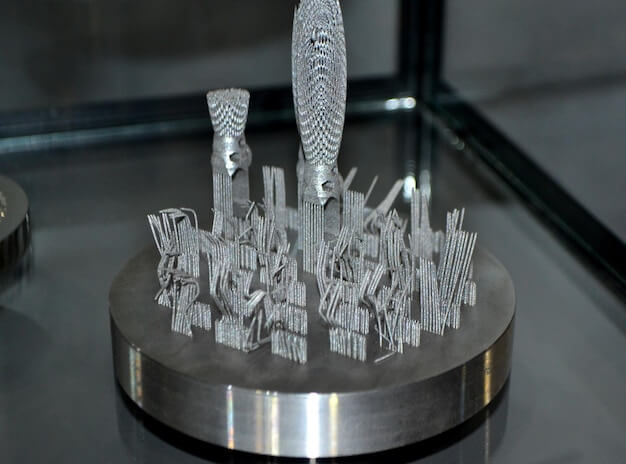CNC Machining and Aerospace Manufacturing
In the world of aerospace manufacturing, CNC (Computer Numerical Control) machining carries significant importance. As a modern machining method that leverages computer programming to dictate complex machinery’s operation, CNC processes enable high precision and repeatability – both critical factors for aerospace components’ production. Two commonly machined materials in the aerospace sector are Aluminum 2024 and 6063. These alloys offer respective benefits upon which manufacturers can bank their aerodynamic performance objectives and specific application requirements.
aluminum cnc machining service
- Aluminum 2024: Characteristically strong with good fatigue resistance, this alloy often finds usage in aircraft structures including wings and fuselages where load-bearing strength is paramount.
- Aluminum 6063: Known for its excellent corrosion resistance and weldability, this variant is typically used in less critical structural parts like door frames and window moldings inside airplanes.
Background and Description: Aluminum 2024 & 6063
The aluminum alloy 2024, developed in the 1930s, is known for its high strength-to-weight ratio, which makes it an ideal choice for the aerospace industry. Its primary elements are copper (around 4.5%), making it one of the highest-strength heat-treatable alloys, complimented with manganese and magnesium. Some significant uses include aircraft structures, rivets, truck wheels, and missile components due to its fatigue resistance and good tensile strength. Its property of maintaining robustness at high temperatures also ensures safety in extreme flying conditions.
Detailed Guide into Aluminum 6063
Aluminum 6063, on the other hand, has different elemental composition comprising mainly of silicon (~0.6%) and magnesium (~0.7%). This combination brings about excellent extrudability and high quality surface finish, while being moderately strong and resistant to corrosion. Specifically within aerospace production, this alloy finds extensive usage in the construction of airplane cabins and other structural applications. It’s capacity to undergo complex shapes through extrusion process proves beneficial in designing intricate aircraft parts without compromising on strength.
Comparison between Aluminum 2024 & 6063 in CNC Machining
Aluminum 2024 and 6063 are both widely used in aerospace CNC machining due to their favorable properties. While Aluminum 2024 offers high strength and good machinability, Aluminum 6063 provides excellent corrosion resistance and weldability. The choice between these alloys depends on the specific requirements of the aerospace application.
Choosing Between Aluminum 2024 vs. 6063 for CNC Machining in Aerospace Applications
In the realm of CNC machining for aerospace applications, where factors such as strength-to-weight ratio and superior finishing become integral considerations, aluminum 2024 and 6063 stand out as two common choices. In scenarios that require a high-strength-to-weight ratio, it is advisable to opt for aluminum 2024. This choice can be attributed to its exceptional tensile strength and hardship which directly contribute to substantial weight savings without compromise on overall integrity or performance.
- Aircraft wings and fuselages are perfect examples where this particular type of aluminum proves ideal due to their demand for structural stability while still needing to remain light.
Moving on to instances requiring excellent finishing characteristics, aluminum 6063 turns into the preferred option. Crafted with fine surface finishes and good anodizing response, Al 6063 comes into play when aesthetic appeal gains significant precedence. Furthermore, it tends to exhibit smooth surfaces post-machining, making it fit for parts like moldings and extruded trims on aircrafts that need a combination of functional efficacy and outstanding visual quality.
V. Case Studies in Aerospace Industry using Aluminum 2024 or 6063
The use of aluminum alloys, specifically 2024 and 6063, has revolutionized the aerospace industry due to their unique properties that lend themselves well to various applications.
A. Real-World Use Case of Aluminum 2024
In real-world scenarios, aluminum 2024 is most notably used in aircraft structures. For instance, key components like wings and fuselages are often constructed with this material because of its high strength-to-weight ratio and good fatigue resistance. This aerospace-grade alloy also boasts excellent formability, making it a choice candidate for complex structural requirements where weight minimization is critical.
B. Practical Usage of Aluminum 6063
Aluminum 6063, on the other hand, finds its practical usage predominantly outside the airplane cabin due to its superior corrosion resistance and surface finish. An example can be seen in manufacturing brackets for external light fixtures or antennas, where environmental exposure requirements come into play. These features coupled with its good extrudability make it an ideal material selection for intricate, low-stress, and aesthetic hardware components.
Other Articles You Might Enjoy
- CNC Machining for Aerospace Applications: Titanium vs. Aluminum Alloys
CNC Machining in Aerospace: An Introduction and Overview Computer Numerical Control (CNC) machining is a manufacturing process that utilizes software-directed machines to fabricate complex parts with high accuracy and repeatability.…
- Aluminum CNC Machining Service for Custom Parts
Aluminum CNC machining stands at the forefront of modern manufacturing, epitomizing precision, versatility, and efficiency. With its widespread applications across industries ranging from aerospace to automotive and beyond, aluminum CNC…
- CNC Machining Materials: Acrylic vs. Polycarbonate for Transparent Components
CNC Machining: An Introduction and the Importance of Material Type Computer Numerical Control (CNC) machining is a manufacturing process where pre-programmed computer software dictates the movement of factory tools and…









